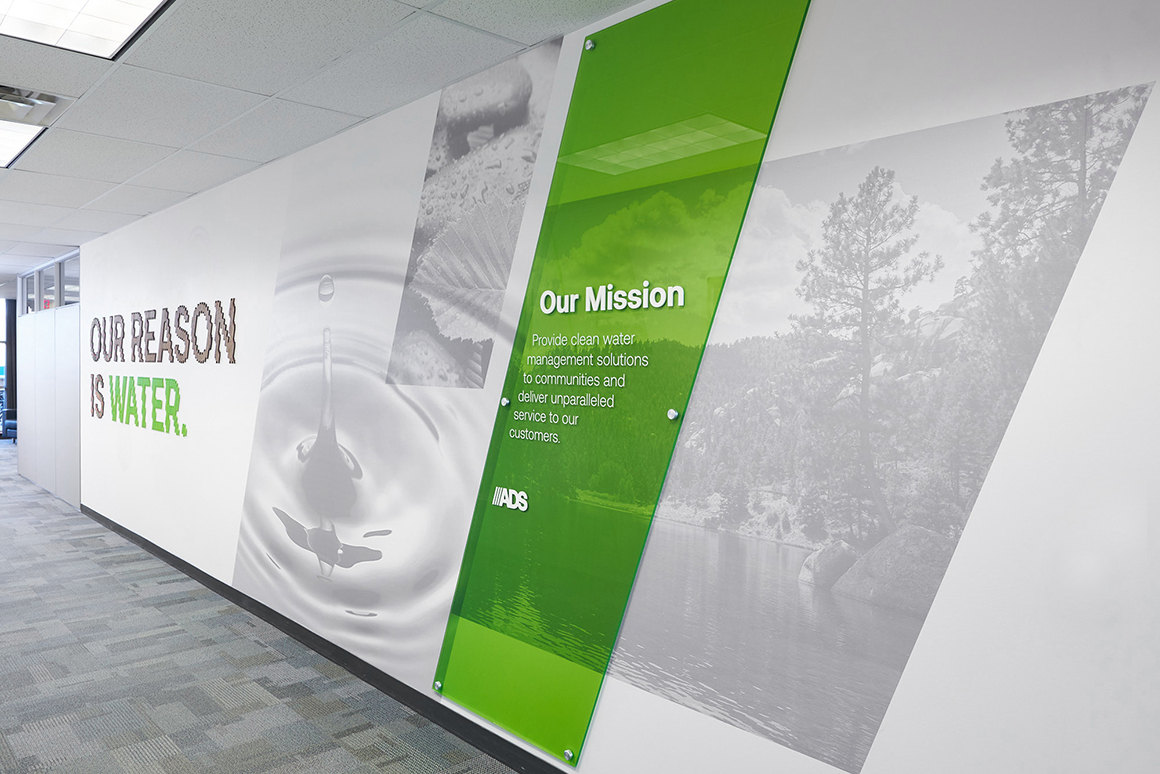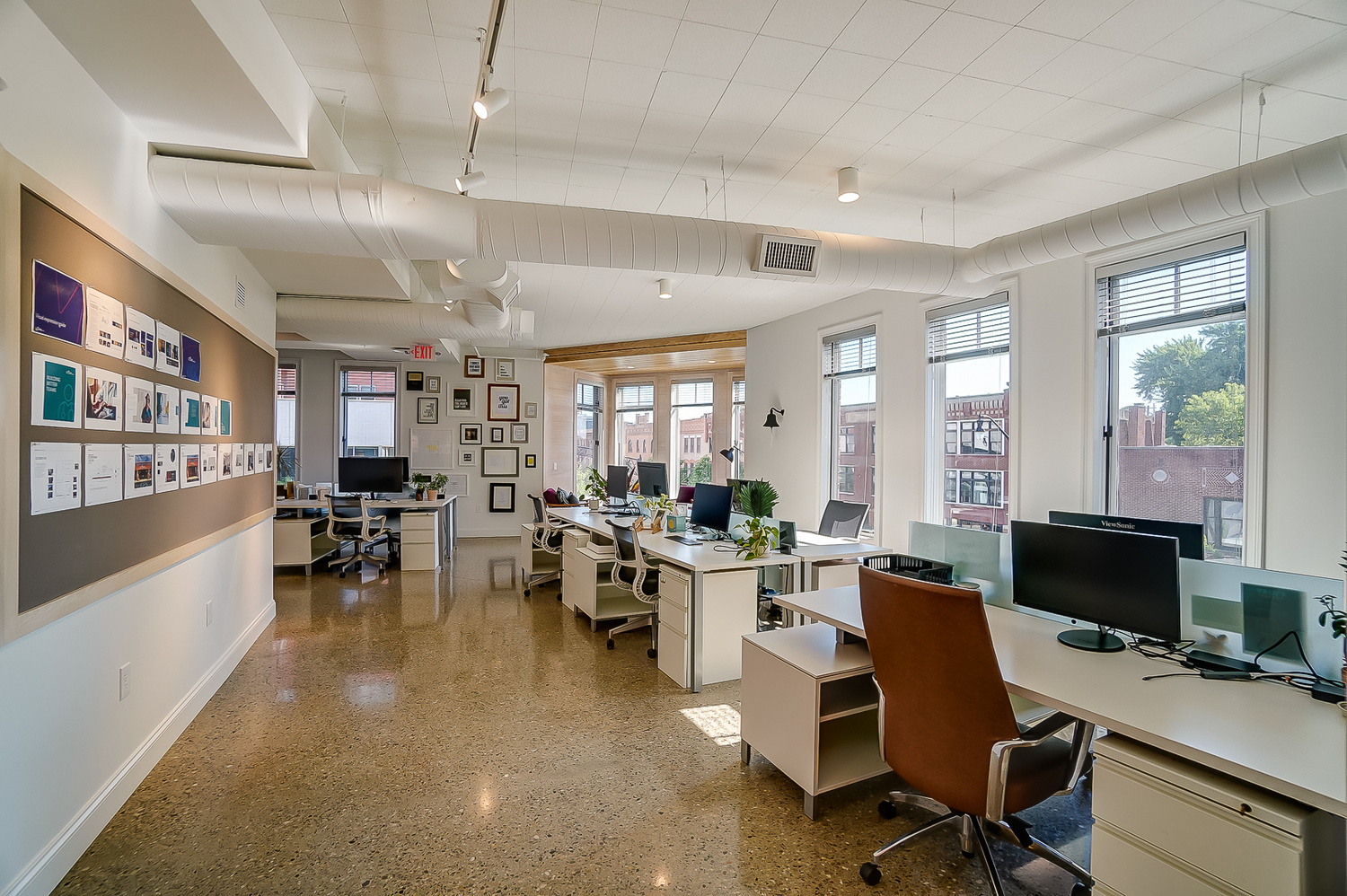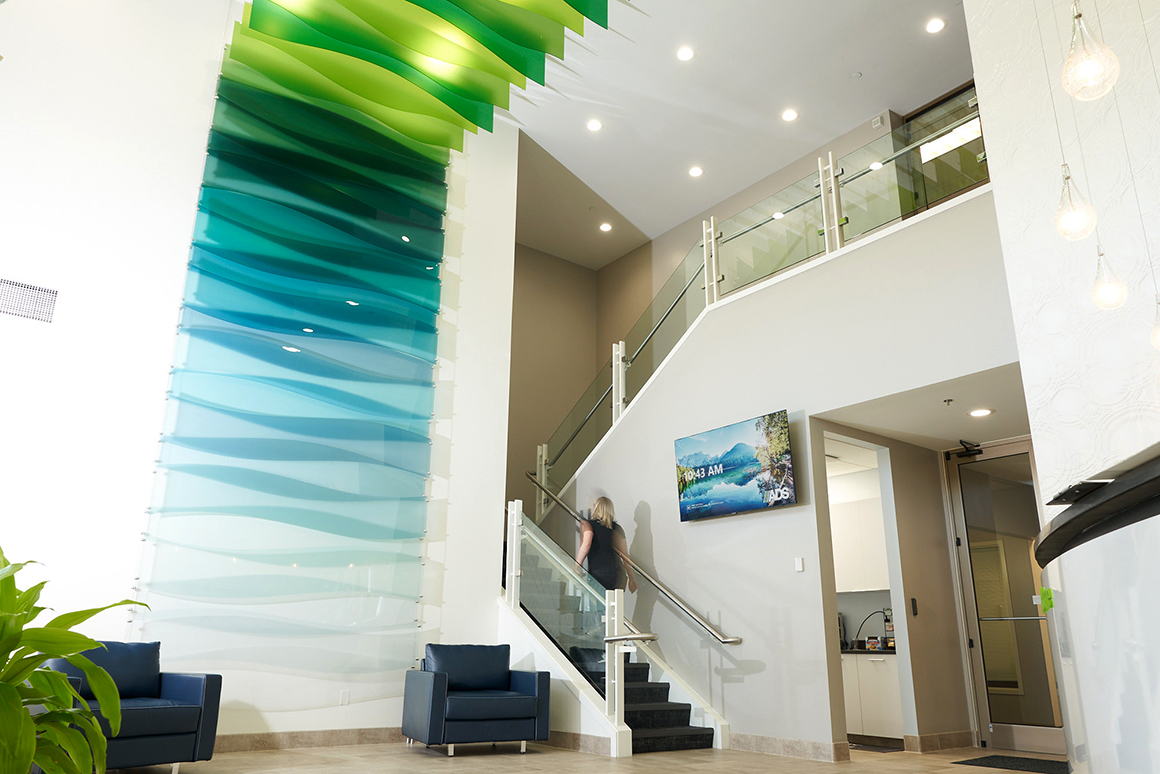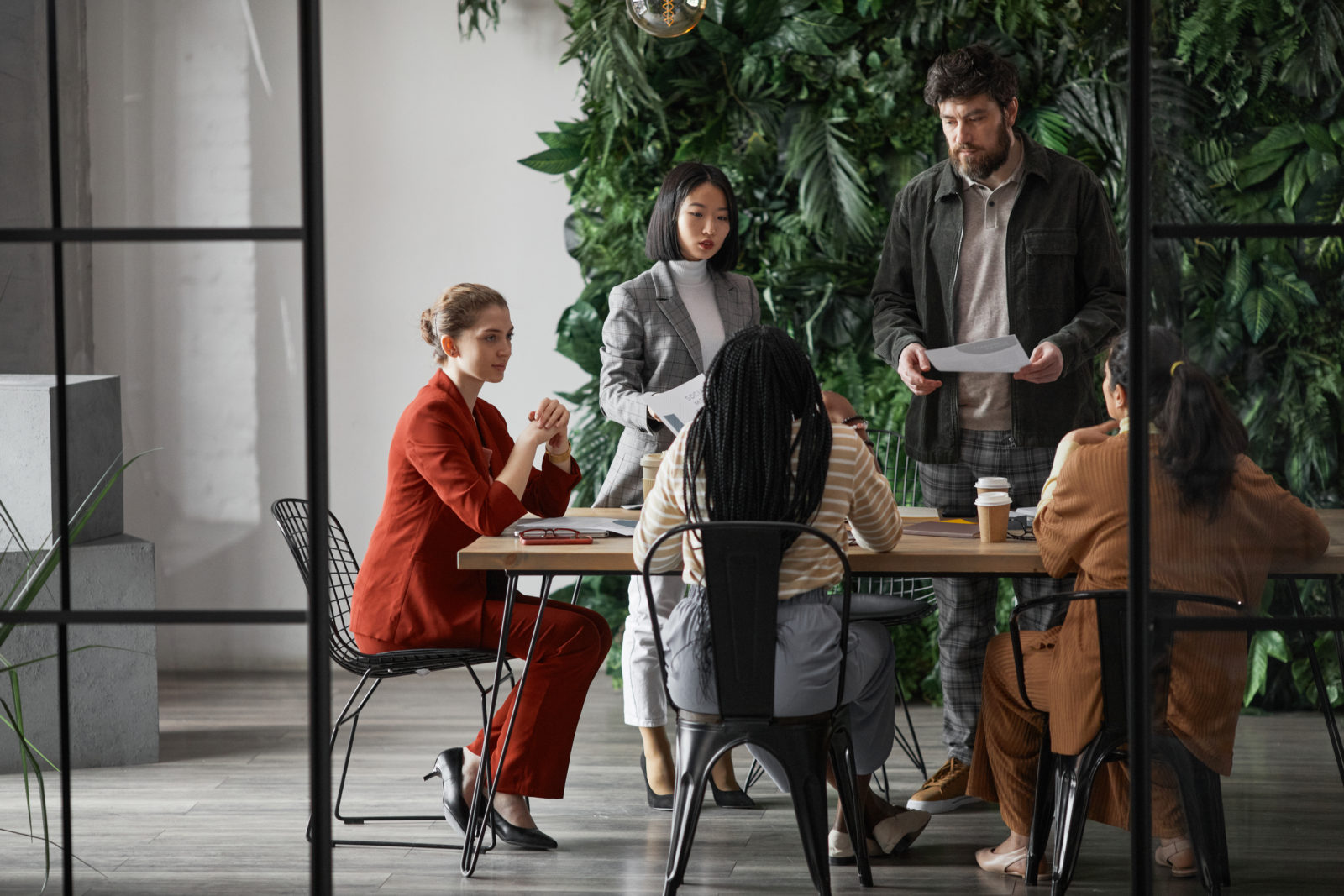Is your post-pandemic workplace still working?
Part 1: Does environmental branding still matter?
- 1. Your audiences are internal and external
- 2. The era of work-life equity is here
- 3. Why “desk hoteling” isn’t a fix-all
- 4. The future might be immersive
- 5. There are no more templates to success
The Curiosity Report is a manifestation of one of treetree’s core values: curiosity. In this series, we tap current and prospective clients, partners and vendors to learn how they’re navigating the twists and turns of their industry, adapting to change and learning along the way.
Each volume aims to answer one big question we’re curious about.
WHAT HAS US CURIOUS TODAY?
Companies have increasingly called their employees back to in-person work in full-time or hybrid capacities. However, workplace cultures and work habits have drastically changed over the course of the pandemic. We wanted to know if the workspaces people are going back to are still giving them what they need to be successful.
OUR BIG QUESTION
Are brands taking the time to evaluate their current office spaces to welcome back employees in a meaningful way? And what are the most compelling environmental branding considerations worth exploring to support this reemergence?
OUR METHOD
We spoke to decision influencers at several B2B giants to see how their organizations are navigating in-person work. We chose companies that are exploring various types of hybrid models, as well as individuals who have prior experience in corporate environmental branding.
In those interviews, we asked them how their offices are currently serving them and whether there have been any changes to employees’ needs since the pandemic. We asked them how their perspective on environmental branding has changed and what sort of role they see it playing in their post-pandemic workplaces going forward. And we asked them to dream with us by imagining what environmental branding could look—and feel—like in the future.
To supplement our findings, we also attended a seminar on the topic by Steelcase, which presented timely primary research on workforce behavior changes that resulted from the pandemic.
Part 1:
Gallup estimates that 52% of companies expect to continue in a hybrid arrangement, while 24% are going completely remote.1 With fewer people in the office overall, you may be asking: Why are we talking about environmental branding right now? The answer? The impression your space leaves has never been more critical.
Environmental design, interior design, interior architecture, space planning and wayfinding are all important considerations for any physical space because together, they tell a story.
As a living representation of your brand, is your workplace telling the story you want it to?

Let’s set the stage
Pre-pandemic, office-based working was the majority, with only 20% of employees working remotely. At the height of the pandemic, 71% of employees adapted to working from home. The pandemic forced working culture to abruptly shift—and we’re still adapting to ongoing hurdles.2
As companies began to bring employees back to the office, many organizations found that what had worked pre-pandemic no longer did. Some companies chose to ignore the writing on the wall and continued with business as usual. Those on the other end of the spectrum chose to sell their spaces altogether. And some are embarking on the challenging journey of evolving their workspaces to serve new employee expectations and behaviors.
New employee priorities
We spoke to several large B2B organizations about those choices, and a major theme emerged: After two years of uncertainty and isolation, employees crave belonging. They don’t want to just go to work and collect a paycheck; they want to work for an organization that matches their own core beliefs and to feel like a valuable member of a team.
Mirroring what we heard in our conversations, McKinsey reports, “More than half of employees who left their job in the past six months did not feel valued by their organization (54%) or manager (52%), or they lacked a sense of belonging (51%).”3 If what employees miss is connection, then inauthentic and disjointed spaces only exacerbate the problem.
Answering the call
Right now, employees are screaming for meaning, especially in response to employers who ask them to leave the comforts—and conveniences—of home to return to the office. And while there are many ways companies can answer this call, placemaking through thoughtful environmental branding can be a powerful way to: communicate your brand’s ethos in a way that entices people to connect, help your brand build stronger relationships, and encourage employees to forge the connections they’re looking for.
As one leader we interviewed put it, “Placemaking is happening whether you mean to or not. But are you doing it well and in a way that serves your employees?” As a culture-building method, and as a marketing tool, investing in your organization’s in-person spaces is an investment in the future of your brand.
Part 2:
Your audiences are both internal and external.
When someone steps into your space, how long does it take them to understand what your company stands for? When environmental branding is done well, the space alone will tell your employees, prospective employees and customers what they need to know about your company almost immediately.
We heard repeatedly that displaying your brand’s mission, vision and values for all your audiences is incredibly important because it provides everyone with a unified reason to believe. But that reason impacts each audience on a different level. Here’s how:
Prospective employees
Future talent understands why your company is different from others they’re courting. They sense the cohesive culture you’ve fostered and want to be part of it.
Employees
Employees feel emotionally invested in what they’re doing and understand why it’s important and how they are personally important. It helps you, and them, continue to build the workplace you promise to be.
Customers
When you invite a customer to your space, they are surrounded by evidence of your differentiators. They begin to trust you more because they feel how deeply your company believes in its calling.
Work-life balance is so pre-pandemic, and the era of work-life equity is here.
There’s a new buzzword on the horizon. If we moved from work-life balance to work-life integration during the pandemic, we’re now entering the era of work-life equity, where life comes first, and work supports a person’s ability to live in a fulfilling way. And it’s a major reason people have sought new positions during the Great Resignation.4
According to research by office furniture company Steelcase, we have shifted to an “era of attention.” Pre-pandemic, much of an employee’s perceived value was based around time spent in the office. When workers were sent home, employers measured value through individual output, or productivity. But now, the value paradigm has flipped. It’s no longer what value an employee brings to the company, but rather what value the company provides for the employee. Workers are making up for time lost to isolating and overworking. They want the autonomy to work wherever they want and, in today’s climate, they finally have the leverage to work for whomever they want.
According to Gartner, “The pandemic has forced us to make real, everyday choices about how we spend our time, energy and social capital.”5
Companies now have to fight for their employees’ attention and prove that their mission and vision are worth employees investing their valuable time.
To that end, when you ask an employee to be in your office, you need to ensure your post-pandemic workplace doesn’t just offer the same amenities as their home setup—it has to provide more. Your employees have spent the past two years carefully curating a deeply personalized home-working environment. To successfully integrate them back into your corporate spaces, the working area must provide value that can’t be replicated at home.
Through environmental branding, you can create spaces that facilitate the face-to-face collaboration workers have been missing without making them sacrifice the comfort they’ve become accustomed to. And by seamlessly reinforcing your mission, vision and values, your workspace can become the foundation of the emotional fulfillment employees now seek in their place of work.
“Desk hoteling” isn’t a fix-all.
Some employers have responded to back-to-office by converting individual desks and offices to shared spaces. Because hybrid and remote work means that offices today are rarely at capacity, this flexible way of reserving space by the hour, day or week removes barriers to collaboration and helps people use space more efficiently.
But for work cultures without defined and intentional placemaking, removing individual seating has left employees feeling disjointed and unwanted.
This brings us back to the concept of belonging. People feel comfort and pride in their owned spaces. When you take that away, it can become a mental burden to leave the comfort of home only to be unsure where or with whom you’re sitting on any given day. So, we need to reimagine what owned spaces look like. They need to be both individual and shared—and above all, flexible.

LEADERSHIP, TAKE NOTE
If your leadership team’s offices are down long hallways or behind several sets of doors, it might be time to move. People want authenticity and connection. Remove those barriers (literally) to build stronger connections from the top down.
Ideas we heard for flexible workspaces
- Pods of desks replacing cubicles
- Flexible seating within an established team space
- Desks assigned with digital nametags depending on who is in the office
- Collaborative team spaces with private focus rooms
Let’s be clear: We aren’t advocating for having zero shared spaces. But our interviews revealed a need for offices to work much harder than they used to. If someone comes into an office building, they need functional and designated areas to collaborate—and also intentional spaces for heads-down time. The combination allows them to continue working on their own terms.
Whatever solution works for your company, you can use simple environmental branding tools like wayfinding and color to outline the parameters for the physical space. We no longer need to be defined by cubicle walls. Combine environmental branding with good space planning to make employees feel connected and empowered in the workplace.
The future might be immersive.
Your brand isn’t just what people see—it can be what you hear, smell and feel. As one interviewee told us, space is an emotion.
With innovations in technology coming in leaps and bounds, we’re no longer limited to visuals. Consider how it feels to be in your space and what sort of impression it leaves on the people who encounter it.
Retail brands have used this methodology for a long time. The retail experience is about curating every possible touchpoint to drive customers toward purchase. You should view your brand, and therefore your space, with the same attention to detail. The organization should act as a host and create an atmosphere of hospitality that helps grow the sense of belonging that will keep employees engaged with your company. Each touchpoint in your office is another opportunity to reinforce your brand and inspire your employees.

Living the vision
On the heels of a robust brand refresh, Advanced Drainage Systems needed its office environment to make an impact. treetree was proud to create moments that reinforced the organization’s brand promise, surrounding visitors with the ADS mission.
There are no more templates to success.
Pre-pandemic, best practices around the design and functionality for corporate spaces often reinforced company hierarchies. We’ve all worked in offices where the higher up the food chain you are, the more windows you get. But in today’s market, employees have the power—and they want equal treatment.
Today’s best practice is to listen to employees and address their needs. Let go of your preconceived notions of “correct” and make decisions that are informed by your employees.
Designing post-pandemic workspaces today is about living with volatility. It’s about making your spaces flexible enough to handle what your workforce asks for instead of forcing your employees into a (literal and figurative) box. The world will continue to change, and companies need to be prepared to ensure their employees have all the tools they need to not just succeed but to thrive.

An ideal future state
One interviewee shared a dream of ultimate customization. In their vision for the future, each team at a company would be surveyed about their unique needs and a space would be built to match. In one company there could be hundreds of uniquely built workspaces tied together by visual, auditory and other sensory brand cues. While it’s not an economically feasible dream for most organizations, that spirit of flexibility and employee-first service is the future.
1. Your audiences are both internal and external. Your space must immediately communicate what employees, prospective employees and customers need to know about your company’s mission, vision and values—or they will decide for themselves.
2. Work-life balance is so pre-pandemic, and the era of work-life equity is here. Workers have spent the past two years crafting their ideal home-working environments. To successfully integrate them back into a corporate space, you must provide value that can’t be replicated at home.
3. “Desk hoteling” isn’t a fix-all. If you take away assigned spaces, you must replace that sense of belonging with defined and intentional placemaking. Workspaces need to be simultaneously individual, shared and, above all, flexible.
4. The future might be immersive. Your brand isn’t just what people see—it can be what you hear, smell and feel. If space is an emotion, how are you making people feel on a visceral level?
5. There are no more templates to success. Listen to employees individually and collectively. Then, design workspaces that are flexible enough to handle what your workforce asks for instead of forcing your employees into an old mold.
We’re in a pivotal time as a working culture. The choices you make now as a company will impact your workforce for years to come and, in turn, impact your brand.
Consider your environment to be as impactful as your sales strategy. Make choices that strengthen your brand’s connections and that give your employees the tools they need to succeed. And don’t be afraid to break down yesterday’s walls to build a better tomorrow.
Download the Report
